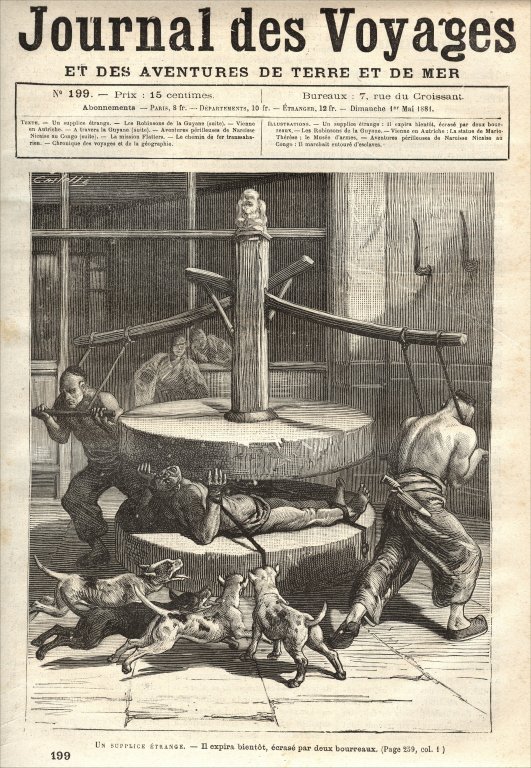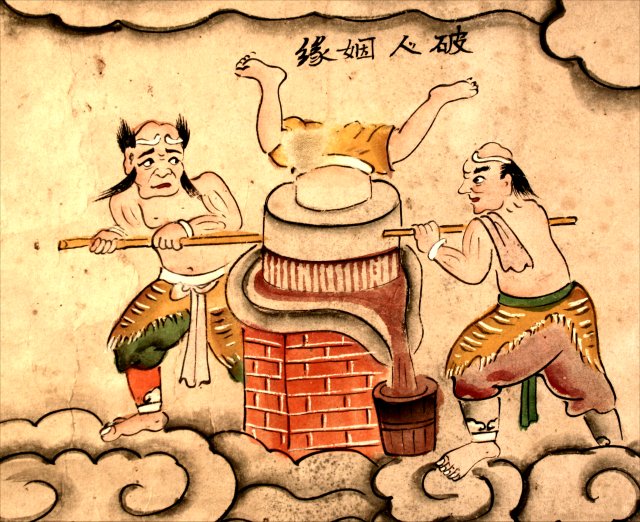
Translation
Destroyed another's marriage.
In "Stone grinder hell" 石磨地獄, this usage of a grain grinding wheel is of course rather imaginative and perhaps belongs to a category of tortures in which agricultural implements - grain grinders, rice huskers, logging saws and so forth - find novel reappropriations. Yet we might logically ask whether these punishments were indeed used in the courts of the living. Brook, Bourgon and Blue in their Death by a thousand cuts contend that the tortures we see in hell are "quite beyond what a Qing magistrate could legally impose."
Furthermore, these hell tortures clearly have a display element. They are intended to be visible, and as the last image on this page demonstrates, some indeed thought that the grinding wheel was not only used as a torture in the yang world of the living, it was also a spectacle to be seen, at least by foreigners reading their newspapers. Yet Brook, Bourgon and Blue are hesitant on how public such tortures actually were:
The logic of this representation [of graphic hell tortures] runs counter to the logic of secrecy by which real-world penal systems operated. Tribunals in the late imperial judicial system were public, yet what happened while a prisoner was incarcerated was kept out of sight as a deterrent. In the Grand Pronouncements ..., the founding Ming emperor writes about the value of keeping the details of penal operations out of public view in what might be called the mystery of imprisonment. What goes on inside the penal system, he states, should not be allowed to become too widely known so that people will be doubly anxious about doing anything that might get them thrown in jail. Prisons should be places of mystery into which the innocent may not see so that their innocense might be preserved.
Brook, Bourgon and Blue contend that graphically displaying hell's torturous spectacle is in fact the opposite strategy. Here the focus is to reveal all and lay bare the guts of the system, figuratively and literally.
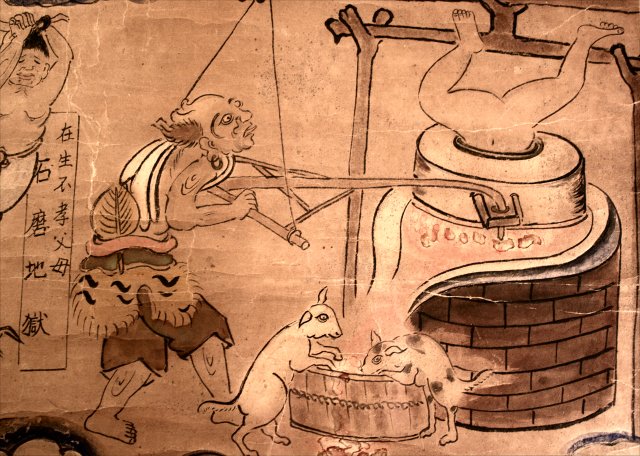
A second example of using the grinding wheel from another hell scroll (C01).
In H.Y.Lowe's account of early 20th century Beijing entitled The adventures of Wu, he describes the second courtyard of the Temple of the Eighteen Hells in Beijing which was full of "all varieties of torture conceivable by the human mind and which are practised in the cells of inferno." In his continuing description, he depicts "the milling department where sinners are ground to powder or paste or whatever shape they assume after the process. The most pathetic touch is added by the likenesses of dogs licking the blood dripping from the bodies being 'operated upon' or partitioned." Note the presence of dogs in most of these grinding wheel tortures.
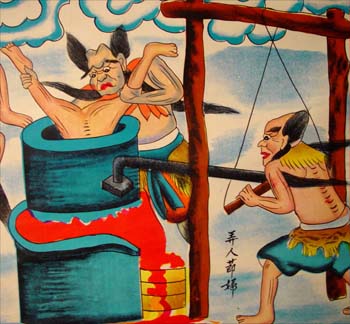
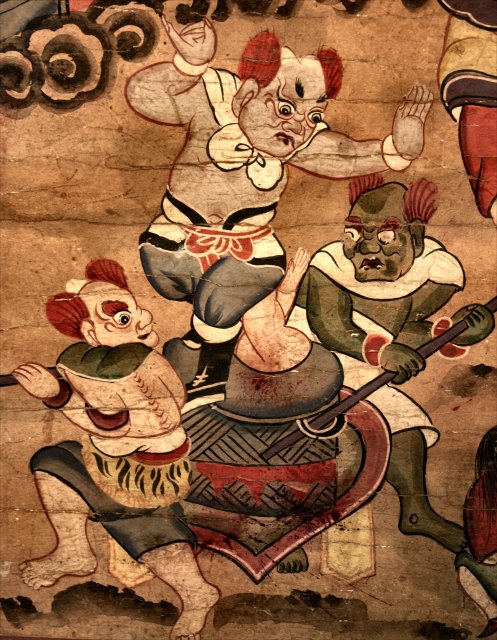
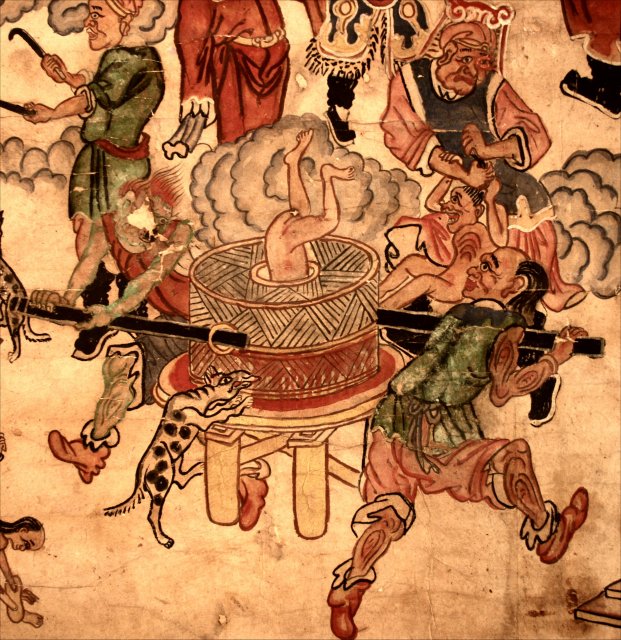


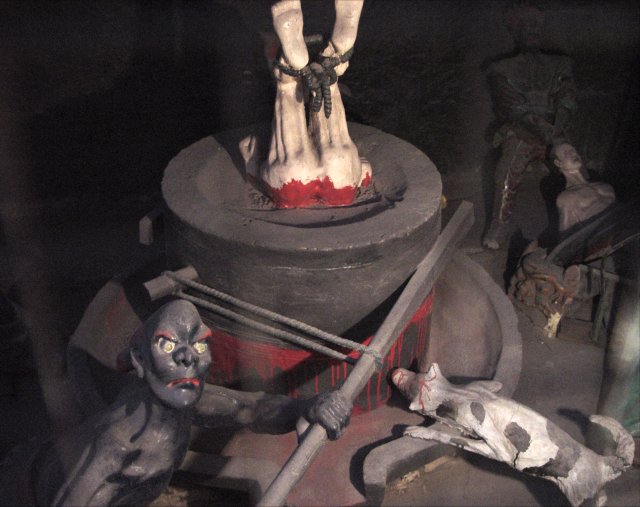
The grinding wheel as depicted at Fengdu, the City of Ghosts.
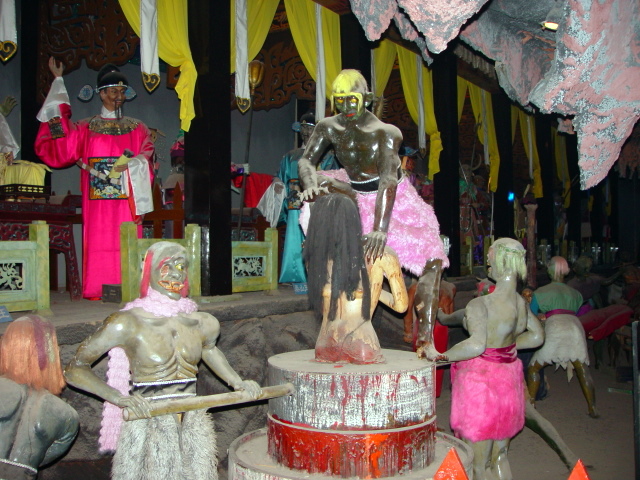
A second example of the grinding wheel from
Fengdu, the City of Ghosts.
These are life-sized automatons, and in this case, the automatons still worked, the grinding wheel going round and round....
